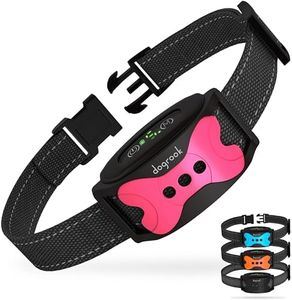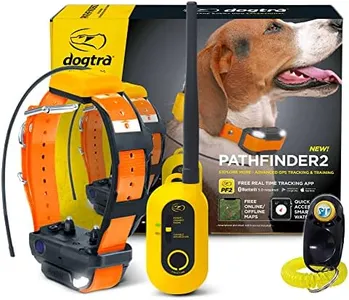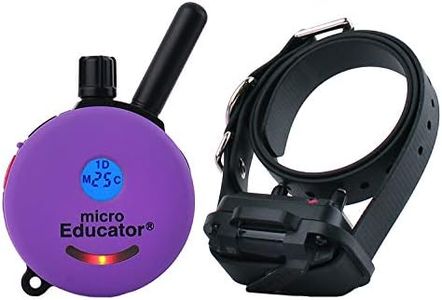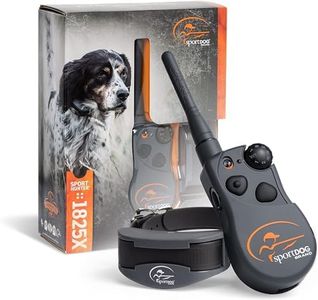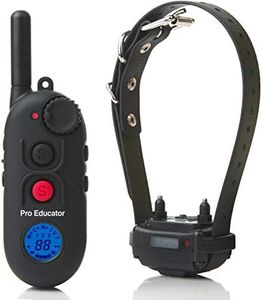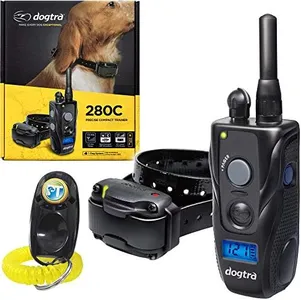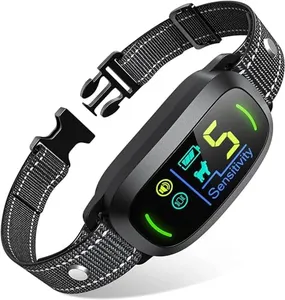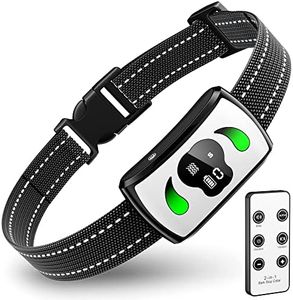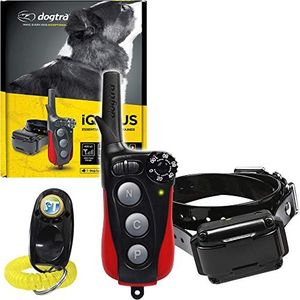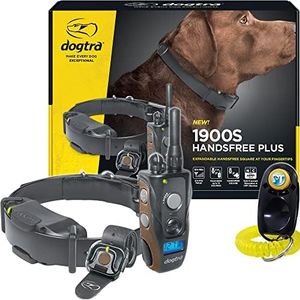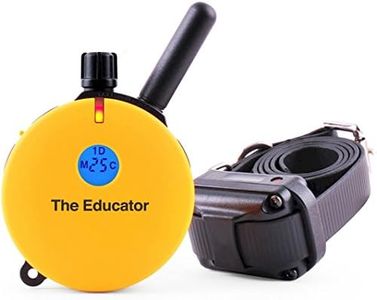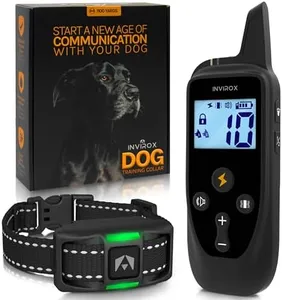We Use CookiesWe use cookies to enhance the security, performance,
functionality and for analytical and promotional activities. By continuing to browse this site you
are agreeing to our privacy policy
10 Best Dog Vibrating Collar
From leading brands and best sellers available on the web.Buying Guide for the Best Dog Vibrating Collar
Choosing a dog vibrating collar can feel overwhelming, but focusing on your dog's temperament and your training goals will guide you to the right choice. Vibrating collars are commonly used for training, managing behavioral issues, or sometimes as a tool for communicating with hearing-impaired dogs. The key is to look for a collar that is effective and humane, ensuring your dog's comfort and safety at all times. Think about what you are trying to achieve with the collar and always prioritize features that support responsible training rather than punishment.Vibration LevelsVibration levels refer to the intensity or strength of the vibrating sensation the collar can deliver, which is used to get your dog’s attention without causing pain. This spec is important because dogs of different sizes and sensitivities respond differently; a gentler vibration works for sensitive or small dogs, while larger or more stubborn dogs may require a stronger sensation to notice the cue. Collars usually offer a range (for example, low, medium, high) or multiple incremental settings. If your dog is timid or small, start with collars that have gentle low levels. If you have a larger or less responsive dog, you may benefit from more powerful or adjustable settings. Always start at the lowest effective level and increase only if necessary, observing your dog's reaction closely.
Collar Fit and SizeCollar fit and size mean the dimensions of the band and how well it adjusts to your dog's neck. Proper fit is crucial for both safety and effectiveness: too loose and the vibration won’t be felt, too tight and you risk discomfort or even harm. Measure your dog’s neck before shopping and look for collars that match your measurement range, accounting for both minimum and maximum adjustments. Lightweight, flexible materials suit smaller or short-haired dogs, while heavier-duty models are more suitable for big or energetic breeds. Always choose a collar that fits securely but is comfortable enough for your dog to wear as needed.
Remote RangeRemote range refers to how far away you can be from your dog for the collar to receive the signal from the remote controller. This is important especially if you plan to use the collar in outdoor or off-leash situations; a longer range provides more flexibility. Basic collars might have a range suitable for indoor or backyard use, while more advanced models can reach several hundred yards, working for larger properties or obedience work at a distance. Evaluate where you’ll be using the collar most often—if it’s mainly at home, a basic range is fine; if you’re using it during walks, hikes, or at parks, consider a longer range for reliable control.
Water ResistanceWater resistance means how well the collar can handle exposure to water from activities like rain, puddles, or even swimming. This spec matters because dogs can be unpredictable and may get wet regardless of your plans. Collars range from not resistant at all (which are vulnerable to damage if wet), to splashproof, to fully waterproof (which can withstand swimming). If your dog likes water, is outdoors a lot, or might wear the collar in all weather, pick a waterproof model. For indoor, dry climate use, basic water resistance or splashproofing is usually sufficient.
Battery LifeBattery life covers how long the collar operates between charges or battery changes. A longer battery life means less frequent charging and more reliable usage, especially during training sessions or outdoor activities. Some collars use rechargeable batteries, others use standard replaceable ones. Short battery life might be acceptable for occasional use or for short training bursts at home, while frequent users or outdoor trainers should look for long-lasting options. Think about how often and how long you’ll use the collar, and choose one that keeps up with your routine to avoid interruptions in training.
Alert ModesAlert modes refer to the different ways the collar can signal your dog—besides vibration, some also offer sound or light cues. This matters because some dogs respond better to certain types of alerts, or you may want multiple options for flexibility. Simpler collars might only offer vibration, while others let you use a beep or a flashing light as an alternative or warning before the vibration. If your goal is to gently communicate or alert your dog, or your dog is deaf, having multiple alert modes could be helpful. Pick a collar with the modes that match your training style and your dog’s responsiveness.
